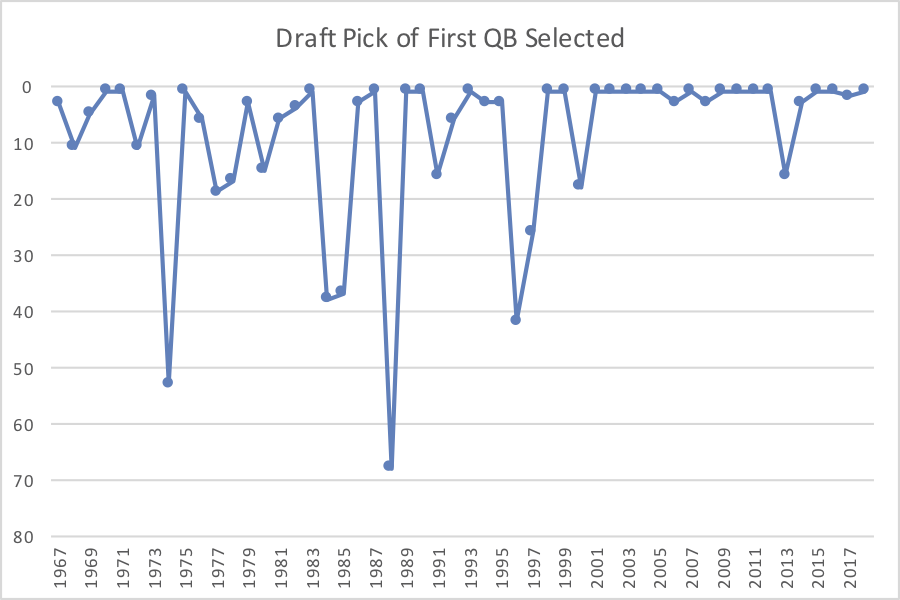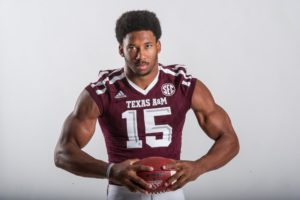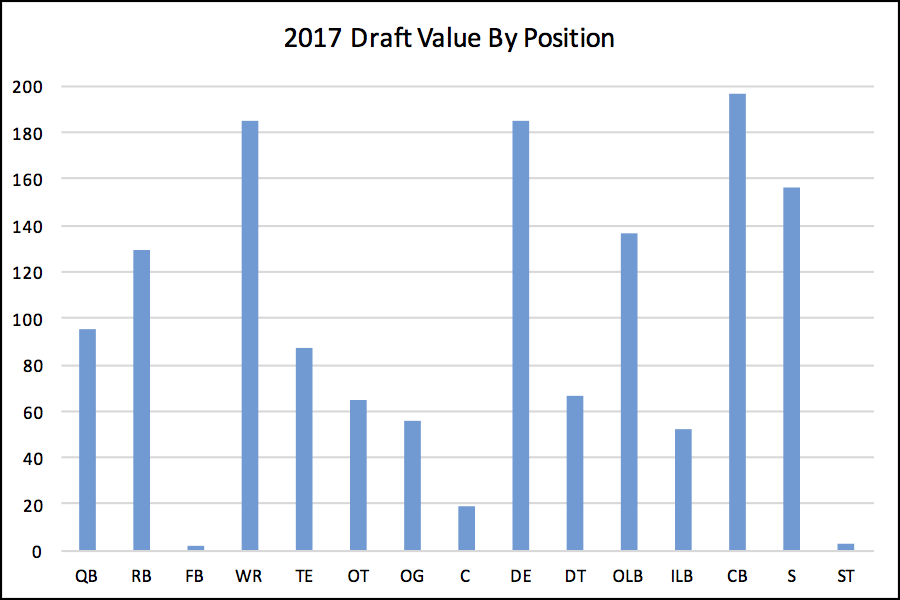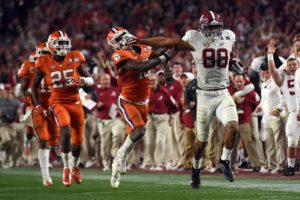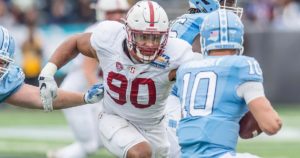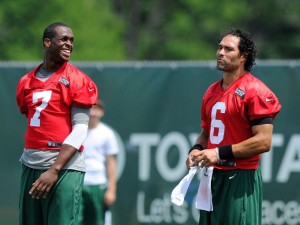As regular readers know, Football Perspective created a draft value chart that mirrors the actual average production by players selected for each draft pick.
In 2015, Cleveland had the most draft value as measured by the Football Perspective Draft Value Chart with 68.4 points. In theory, that could have set the Browns and 2nd-year GM Ray Farmer up for long-term success. Instead? The Browns mostly missed on those picks.
Shelton saw the field on 44% of Browns defensive snaps this season, Erving is now in Kansas City, and Orchard has just 5 sacks in three seasons. Johnson has been a very good 3rd round pick, but Cooper is now off the team, and none of the players drafted in the 4th through 7th rounds have made any material impact. In short, it was a disappointing draft (and this was after an extraordinarly disappointing draft in 2014 that saw the Browns and Farmer select Justin Gilbert and Johnny Manziel in the first round.
In 2016, the Browns and new GM Sashi Brown had even more draft capital: 75.3 points, again the most in the NFL. The early returns are mixed:
Coleman has been a disappointment through two seasons, and sealed the team’s 0-16 fate by dropping an easy first down catch on 4th-and-2 on the Browns final drive. He has just 56 receptions in two years. Ogbah flashed as a rookie, but missed most of the second half of the 2017 season as a rookie: between him and Nassib (8 quarterback hits and 3 sacks while playing about 60% of the team’s snaps), the Browns probably have at least one solid pass rusher. Coleman and Drango have turned into starters on the line, and Schobert played every snap for the Browns on defense this season, but how much is there to be said for being a starter on an 0-16 team? Schobert, perhaps unsurprisingly, led all defensive players in both tackles (58) and assists (41) on run plays, but he had just three tackles for a loss. The skill position players, including Kessler, have not panned out through two seasons.
Then, in 2017, the Browns led the NFL with a whopping 86.9 points of draft value! The Saints were second with 63.5 points, showing the massive margin the Browns had on the rest of the NFL.
It’s hard to grade the 2017 class, but again… 0-16 doesn’t help matters. Garrett had 7.0 sacks and 18 quarterback hits despite playing on just 48% of all Browns snaps; he looks like the real deal, and there’s every expectation that he will turn into a consistent double digit sack player. Peppers was on the field for 75% of snaps, and Njoku flashed the athleticism that made him a first round pick. Those three still have bright potential. Kizer? Well, he was a disaster, but Jared Goff showed us that a bad rookie season doesn’t necessarily mean much for how year two will go (of course, it seems likely that Kizer won’t be the team’s starter in 2018).
But guess what: the Browns aren’t just back at it for a fourth year in a row and with a third GM in John Dorsey. If this was a movie, the 2018 Draft would be The Browns and The Draft Part IV: This Time More Brownsier. The Jets have the 2nd most draft value of any team this year, thanks to the 6th overall pick and an extra 2nd round pick from Seattle as part of the Sheldon Richardson trade. The Jets have 66 points of draft value, and the Giants (who own the 2nd overall pick) have 62.5 points.
The Browns have a projected 119.9 points of draft value.
***One Hundred And Nineteen Point Nine Points.***
Cleveland owns the 1st, 4th (from the Deshaun Watson trade), 33rd, 35th (Brock Osweiler trade), a late 2nd (~63rd overall) from the Eagles as part of the Carson Wentz trade, and the 65th picks in the 2018 Draft. By virtue of having the 1st pick in every round, and top-5 picks in the 1st and 2nd rounds from the Texans, along with Carolina’s 4th round pick, and Pittsburgh’s 6th round pick, the Browns are absolutely loaded with 2018 Draft Capital — just like we knew they would be. But when I wrote that article, I didn’t realize (1) the Browns would have the first pick every round, and (2) the two Houston picks would be top four picks in the first two rounds. So as rosy as the outlook was before, it’s even more remarkable now.
Cleveland is going to be the first team since the 2000 Jets with four picks in the first 40 selections. The Browns, if they keep their selections, would become just the sixth team since the common draft (1967) with two top-5 picks:
- Buffalo drafted Tom Cousineau (who never played for the team) with the first pick in the 1979 Draft (received from San Francisco in the O.J. Simpson trade), and then WR Jerry Butler with the fifth pick that same year.
- In 1982, the Baltimore Colts drafted LB Johnnie Cooks with the 2nd overall pick, and then QB Art Schlichter with the fourth pick (from the Rams in the Bert Jones trade).
- Ten years later, the now Indianapolis Colts had the first two picks in the Draft (from Tampa Bay in the Chris Chandler trade), and chose Washington DE Steve Emtman and Texas A&M LB Quentin Coryatt.
- In 1994, the Indianapolis Colts yet again had two top five picks, drafting RB Marshall Faulk with the second overall pick and then Nebraska LB Trev Alberts with the fifth pick (the Colts acquired the 7th pick from the Falcons as part of the Jeff George trade, and then sent a third round pick to the Rams to move up from 7 to 5)
- In 2000, the Redskins had the second and third picks and selected Penn State LB LaVar Arrington and Alabama T Chris Samuels. The Arrington pick was part of the Ricky Williams trade, while Samuels was a tradeup involving Washington’s original 24th pick plus the 12th pick they received from the Panthers for Sean Gilbert).
In terms of overall draft value, the Browns are at near-record proportions. As a technical matter, the final draft value will depend on where the Eagles, Steelers, and Panthers, but for now, we can get a pretty close estimate. Assuming no trades (unlikely), the Browns will become just the 15th team since 1967 with at least 100 points of value according to the Football Perspective chart. Even more impressive: the Browns 119.9 point haul would rank as the third best ever.
| Rk | Team | Year | Value |
| 1 | Cowboys | 1991 | 132.2 |
| 2 | Bengals | 1968 | 121.4 |
| 3 | Browns | 2018 | 119.9 |
| 4 | Patriots | 1982 | 118.6 |
| 5 | Bills | 1979 | 115.7 |
| 6 | Rams | 1975 | 114.2 |
| 7 | Bills | 1985 | 113.9 |
| 8 | Seahawks | 1976 | 107.7 |
| 9 | Colts | 1982 | 107.3 |
| 10 | Buccaneers | 1987 | 106 |
| 11 | Bengals | 1977 | 105.7 |
| 12 | Vikings | 1967 | 104.7 |
| 13 | Colts | 1974 | 100.7 |
| 14 | Colts | 1992 | 100.3 |
On one hand, it’s easy to just say the Browns will mess this up. On the other, Dorsey is so well-positioned to turn things around that the expectation for Cleveland should be to make the playoffs by 2019, and be competitive this season. Cleveland has a historically high level of draft capital, over 100 million dollars of free agent money available, and has one of the youngest teams in the NFL. And while the Browns were 0-16 in 2017, the team had 3.3 Pythagorean wins against a neutral schedule. Dorsey has the ability to turn things around very quickly… just like all Browns GMs before him.






